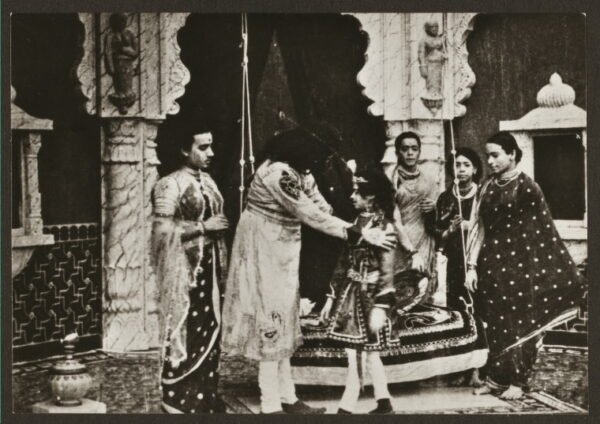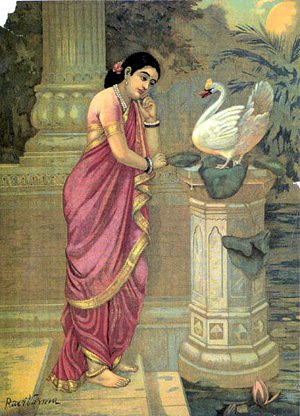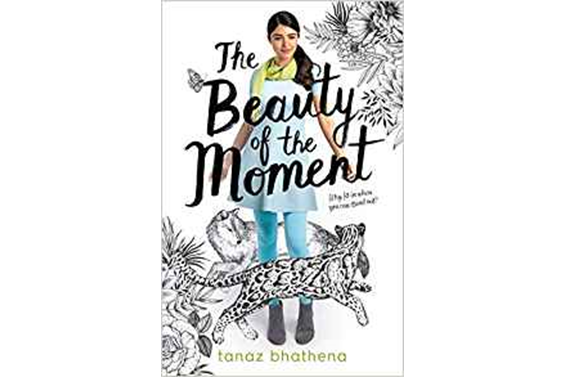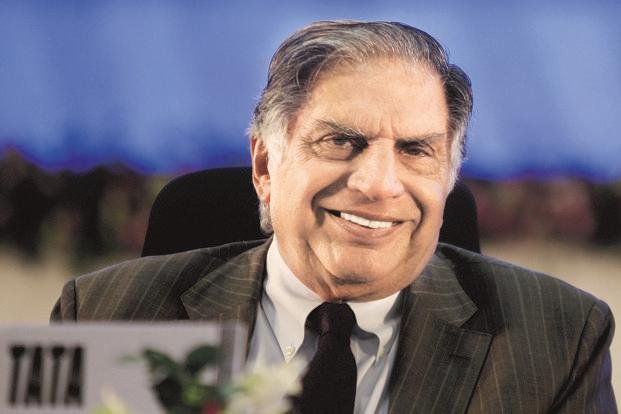How Parsi Theatre Gave an Impetus to Hindu Mythological Plays in Victorian India
Sunday mornings for us half-Parsi children of the early 90s, reared in Colaba on an unabashedly snobbish repertoire of Rodgers and Hammerstein’s greatest hits, were an exercise in cultural discombobulation. At our conservative Gujarati maternal grandmother’s Matunga flat, we waited impatiently, while thumbing our cousin’s worn Tinkle and Amar Chitra Katha volumes, for B. R. Chopra’s televised Mahabharata to end.
Though relatively peripheral to our ideological upbringing, those balmy, hot-sticky Sundays, with bus route 123 passing through Marine Drive and the Churchgate slow local functioning as portals slipping us across microcultures and aesthetic worlds, were formative (as for many other children) in our imaginings of history, country and inter-religious sameness and difference.
The significant impact of Doordarshan’s Hindu mythological serials in Indians’ popular consciousness has often been noted as also the renewed popularity of old reruns and new shows such as Sankatmochan Hanuman and Vighnaharta Ganesh during lockdown. So also have a few female-centric films: Padmavati and Manikarnika most notably, tapped into a not untroubling desire for an ‘authentic, uncontaminated’ Hindu past. Yet few apprehend that the oft-described ‘timelessness’ and strong ‘psycho-social influence’ of these serials and films, have less to do with narrative-excellence or nostalgia than the enduring socio-cultural influence of and the collective memory honed by the dramatic precursor of Indian cinema: the nineteenth century pan-Asian Parsi theatre.
The Parsi theatre
By the late 1860s, the Parsi theatre, comprising Persian mythological plays, Gujarati adaptations of Shakespeare and farces on an assortment of themes from the Franco-Prussian war to child-marriage, had ceased to cater to its erstwhile founders: ‘respectable’ Parsi reformists.
Along with a new public of ‘Khojas’, ‘Memons’ and ‘Bhatias’, the Parsi press noted not only the theatre’s transregional popularity across Delhi, Calcutta, Madras and Hyderabad, but also the increasing attendance of sailors, schoolboys and the ‘servants’ at Bombay’s Grant Road and Victoria theatre.
Itching with the desire to bring his beloved theatre back to the path of righteousness, that is, to a place of decorum for the ‘respectable’ classes, Kekhuśro Kābrājī, the purported father of the Parsi theatre, established the Society for the Amelioration of the Drama in March 1875 to ‘put an end to the public’s nāṭaknũ ceṭak (theatre mania).’ (“Revival of the Parsee Drama”, Times of India, March 26, 1875, 3 and “The Guzrati Drama.”, Times of India, March 14, 1875, 177.)
Shortly after its opening, the Society produced the first śuḍh (pure) Gujarati play of the Parsi stage, Hariścandra at the honourable Framjee Cowasjee Institute that had hitherto primarily been used for scientific lectures and exhibitions. The Hindu reformist Raṇchoḍbhāi Udayrām translated the play from Sanskrit into Gujarati and Kābrājī subsequently adapted this ‘uncorrupted’ text for the stage.
Although the Society’s Parsi amateur actors dreaded the prospect of mastering ‘unsullied’ grammar and pronunciation from a Hindu teacher and of performing in an ‘alien’ language before possibly disgruntled Parsis and condescending Hindus, after months of training in distinguishing āne with āe (and), āvyũ with āvīũ (came) and āpyũś with āpīũ, the play transpired to much aplomb. Audiences had to return home due to the unavailability of seats for weeks on end for this landmark production that would be staged for an unheard of hundred and fifty times in the history of the Parsi stage.
Why, however, was a process underway in the 1870s ‘to revive ancient Hindoo literature and rescue it from the ravages of time’?(Times of India, April 12, 1881, 3.) Why was the play, shorn of spectacular effect and elaborate costume, the object of such immense public esteem?

The play tells the tale, known to many Indians, of King Hariścandra’s trials and tribulations due to the wily Vīśvamitra. He first gives up his kingdom and all his worldly possessions, then he finds himself tricked into an enormous debt and is driven to sell Queen Tārāmatī and his son to a wealthy Brahmin even as he sells himself to a funeral caretaker. While his child eventually dies from a snake-bite, his wife is implicated in the death of the Prince of Benares. She is found, accused of the murder and condemned to a death at the hand of her husband. Hariśchandra, unswerving from his dharma, prepares to strike when the Gods stall this act of self-sacrifice and commend him for his virtues.
Like the panoramas, dioramas and trapdoors of previous Parsi spectacular plays, this first Hindu mythological play thus implicitly demonstrated the principle, preponderant in the turn of the century stage, that what one appeared to perceive was not necessarily ‘truth’. The hallmark of the Hindu play, Maya – that the visible world was an illusion and that reality existed elsewhere or was otherwise – gratified the burgeoning socio-political belief in the 1870s that European post-enlightenment knowledge as articulated in colonial linear history, science or philosophical treatises à la Adam Smith and Jeremy Bentham had no monopoly on conceptualizing reality, a sentiment that obliquely articulated disquiet and resentment over foreign rule.
Hindu deities of the Parsi theatre (already a successful cultural phenomenon in North and South India) enunciated mytho-poetic versions of the past, thereby facilitating the proliferation of populist visual icons and motifs in the form of what would come to be known as Hindu revivalism.
On December 3, 1876 the newspaper Rāst announced the production of the Society’s next play, Naḷ Damayantī adapted for the stage by Kābrājī from a script that, once again, had been written by Udayrām. While Harīścandra presented the significance of satya (truth), this second play portrayed patīvratā (duty/devotion of a virtuous wife).
Damayantī thus pursues her dharma of remaining loyal to her husband in the face of numerous trials and tribulations inflicted by the gods, particularly a personified Kalyug (Age of Downfall). That the illusion of the difficulties of the contemporary world would yield to a communal awakening towards a brighter reality, was the production’s dramaturgical design, potent not least due to the concurrence of the Queen’s proclamation as Empress of India.

Naḷ Damayantī‘s performances received, like Harīścandra, an inordinately enthusiastic response, prompting the press to castigate the wailing spectators, the excessive applauses and unremitting encores. Similarly, the historian Dadabhai Paṭel describes the considerable impact of the play on Bombay’s Hindus who allegedly sent their helpers hours before the performance to occupy the house’s best seats. ‘Hindu women came by the hordes to see the play, causing bedlam when the wails of their crying infants reverberated throughout the playhouse.’ (Paṭel, Dhanjībhāi Na. Pārsī Nāṭak Takhtānī Tavārīkh, 291-292.)
Cognisant of this new public, the Society took up, under Kābrājī’s supervision, the significant initiative of providing cots in the playhouse’s yard. The company thus tapped into an entirely new demographic of spectatorship in Bombay’s Hindu women who thronged the theatre to see their gods and goddesses on stage. Through the Hindu mythological play that was eventually staged across the subcontinent, the Parsi theatre thus inadvertently propagated a new set of devotional practices and forms of religious consumption that provided common symbols and meanings across a confoundingly complex, segmented polity for modern religious rituals, political assemblies, and anti-colonial demonstrations.

Moreover through pure, ritual-abiding female figures such as Damayanti and subsequently Sita and Padmini, Parsi mythological plays articulated a crucial development: the creation of self-suffering Hindu feminine icons that would become fundamental to both militant as well as non-violent Satyagraha nationalist movements. The figure of Bharatmata was here first gestated, the theatre inadvertently seeing the nation into being long before elite discourses of political revolution and national awakening came to the fore.
For the first time in the subcontinent, long before serialised or filmed versions of Hindu mythological tales came to the homes of a slowly liberalising India, overwhelmingly distinctive regional, ethnic and language-based communities were simultaneously introduced to a common archive of symbols: glowing trishuls, ‘pure’ subtly nasal twang, jasmine garlanded hair knots, a highly influential anti-colonial visual frame of reference that eventually constituted an aesthetic vocabulary for the history of the nation.
A Hindu theatre
Increasingly Udayrām thought about his dependence on Parsi companies for the production of his Hindu mythological plays. In January, 1878, the playwright set up the Gujarātī Nāṭak Maṇḍaḷī at the Original Victoria Theatre for the express benefit of Hindus for whom pious refreshments (for example, milk) were served by a Brahmin.
The company performed Udayrām’s Lalitā Dukh Darśak that portrayed the travails inflicted on a dutiful Hindu wife by her family amidst much Parsi criticism of the Bania actors who lacked the experience and self-assuredness of their Parsi peers.

The Parsi theatre thus assumed the seminal function of diffusing across a linguistically and ethnically fractured polity a distinctly modern, colonial vision of the ‘Hindu’ as an essentialised, monolithic, clearly circumscribed, symbolic whole thereby laying the groundwork for the sectarian politics that cleave the subcontinent to this day.
Rashna Darius Nicholson is assistant professor of theatre studies at the University of Hong Kong. Her book The Colonial Public and the Parsi Stage: The Making of the Theatre of Empire (1853-1893) traces the early development of the Parsi theatre.
Source: Click Here





